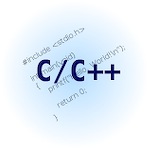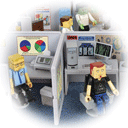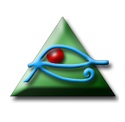Interesting Argument about Boost Smart Pointers
Thursday, November 8th, 2007
In my work today on updating the valuation library to a current production version, I once again came across Boost smart pointers. Now there's a lot of good things in Boost, and I have barely scratched the surface of what Boost has to offer, but the implementations I've seen that use smart pointers are much more confusing than they are helpful. After all, the point is to make it easier to write code - not harder.
Well, I was chatting with a good friend about this today after the fact and he uses Boost's smart pointers a lot and doesn't see the confusion. I can agree that if I were using them all the time I'd probably be desensitized to them as well. But I'm not yet used to Boost's smart pointers, and honestly prefer to handle the memory management myself - that's one of the reasons I'm using C++ in the first place - careful resource management. But I see his points, and because I found the conversation very interesting, here's the gist of it.
Take the following little code snippet:
typedef EQS::Shared<Operation>::Ptr OperationPtr;
typedef EQS::Shared<Results>::Ptr ResultsPtr;
...
OperationPtr lOperation = lFactory.getOperation(mType);
ResultsPtr lResults = lOperation->execute();
double value = lResults->getValue();While it's perfectly legal code, if you separate the typedefs into the header file and the remaining three lines into an implementation file you have something that's confusing to a traditional C/C++ developer. Are lOperation and lResults pointers or not? Well... in reality, they are and they aren't.
They are in the sense that you can use the "->" to access methods, but in another sense, they are removed when they go out of scope in the code - like traditional stack variables. While this might be seen as a benefit by some, to me it makes the code exceptionally confusing.
In my opinion the line is being drawn too finely. Make theme appear much different from pointers and the confusion goes away. For example, the following code looks odd, and different, but there's no possibility that someone will be confused by the pointer-nature of the "->":
typedef EQS::Shared<Operation>::Ptr OperationPtr;
typedef EQS::Shared<Results>::Ptr ResultsPtr;
...
OperationPtr lOperation = lFactory.getOperation(mType);
ResultsPtr lResults = lOperation..execute();
double value = lResults..getValue();
or, as if taking a page from Objective-C, this:
OperationPtr lOperation = lFactory.getOperation(mType);
ResultsPtr lResults = lOperation[execute()];
double value = lResults[getValue()];In both cases, there is a distinct visual difference in how the objects are being used. In these examples, this is silly and trivial, but in large code sections where there is a lot of processing and the usage of the "->" implies traditional pointer, it's confusing.
I know they did this to make them seem as close to real pointers as possible and allow for the auto-CG, but I think they'd be better off - as C++ was with references, in making a new language element. And if they can't have that, then at least overload a different operator - or something to make it looks significantly different from traditional pointers.
I guess my point is that by using smart pointers you'd never think twice about doing this:
SmartPtr p = foo.bar();
p->goof();
but you'd never do this:
char p = foo.bar();
p->goof();
and while you could do this:
typedef char *CharPtr;
...
CharPtr p = foo.bar();
p->goof();why would you?
Consistency... that's an important part of a language to me. Perl is nice, and yet it's strength is also it's weakness - you can do the same thing a million different ways. But almost all my Perl code does the same thing the same way - just for that consistency.
The conversation has continued and my friend has pointed out that there is a significant historical component to this that I wasn't aware of, and it sheds light on why they are used this way:
fair enough, call it something else, but, history helps shed light here. In the early days of c++, you didn't have any such thing. Then sometime after the first standard release, they said, hey, let's address a simple memory leak issue and added auto_ptr to the stl. Now auto_ptr seems like a reasonable name and they designed it so that you had almost no coding impact to replace your regular c-style pointers with auto_ptr. You could imagine the resistence they would get if you had to re-write huge chunks of code to migrate over to it. Instead, you had to change your type declarations and remove some deletes and that was basically it.
However, people started to realize that std::auto_ptr wasn't so good for various reasons and the boost guys came along and introduced a richer set of pointer objects that kept the same semantics so that it was easy to migrate.
I can see his point, but when he pressed me about what I thought C++ should do I said that they needed to add a fourth elemental data type:
- value
- pointer
- reference
- smart pointer
and that smart pointer is going to have a different decorator for accessing it's methods and ivars. By making it too close to a pointer, they have in effect made it more confusing.
Where Java Got it Right
After thinking about this overnight, I have to admit that this is where Java got it right. If they had wanted to add in a reference-counted dynamic object in C++, they should have created smart references. Had they done that, it would have allowed for the 'new' without the need for a 'delete'... it would have used the '.' as the method invocator, and it would have allowed for the complete absence of the '*' in definitions. In fact, I suppose that the only thing they are missing now is the use of '->' when '.' would be better. Then, simply call them smart references and the confusion is gone.
You can still have them hold a NULL, unlike traditional C++ references, but that would be the edge condition, as it is in Java, and not the typical use of the datatype. Yup, I have to say that they'd be so much better off in my mind if they went for 'references' as opposed to 'pointers'.





